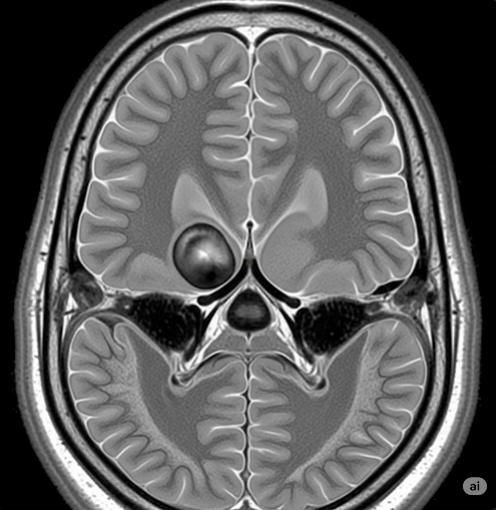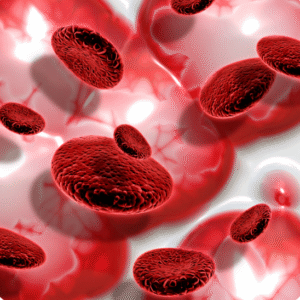Overview
A pineal tumor is a rare growth that develops in or around the pineal gland — a small, pea-shaped gland located deep in the center of the brain, between the two hemispheres. The pineal gland plays a key role in regulating circadian rhythms by producing the hormone melatonin. Although pineal tumors are uncommon, they can affect critical neurological functions due to their location near the brainstem and cerebrospinal fluid (CSF) pathways. These tumors can be benign or malignant and typically occur in children and young adults.
What is a Pineal Tumor?
A pineal tumor is an abnormal mass of cells that arises in the region of the pineal gland, which is part of the epithalamus in the brain. These tumors can originate from pineal gland cells or nearby tissues and are classified into several types, including:
- Germinomas – the most common malignant pineal tumor, especially in children
- Pineocytomas – usually slow-growing and benign
- Pineoblastomas – aggressive and malignant, primarily affecting young children
- Glial tumors – originate from support cells in the brain
- Teratomas, astrocytomas, and meningiomas – other rare tumor types that may occur in the pineal region
The mass effect of these tumors can compress nearby structures like the cerebral aqueduct, causing obstructive hydrocephalus (fluid buildup in the brain), leading to serious neurological symptoms.
Symptoms
The symptoms of a pineal tumor depend on its size, type, and location but commonly include:
- Headaches, often worse in the morning
- Nausea and vomiting due to increased intracranial pressure
- Blurred or double vision
- Difficulty with eye movement, especially upward gaze (Parinaud’s syndrome)
- Sleep disturbances due to melatonin disruption
- Balance or coordination problems
- Seizures (less common)
- Fatigue or changes in alertness
- Developmental delay or behavioral changes in children
Causes
The exact cause of pineal tumors is often unknown, but they are thought to arise from abnormal cell division in the pineal gland or surrounding tissues. Contributing factors may include:
- Genetic mutations or chromosomal abnormalities
- Congenital origins, particularly in pediatric cases
- Germ cell misplacement during embryonic development
- Radiation exposure, although rare
- No known lifestyle or environmental causes in most cases
Some types of pineal tumors, such as germinomas, are more likely to occur in people of Asian descent and males.
Risk Factors
Pineal tumors are rare, but certain groups may have a slightly higher risk:
- Children and adolescents, especially boys
- People with congenital brain abnormalities
- Individuals with genetic syndromes (e.g., Li-Fraumeni syndrome)
- Family history of brain tumors
- Certain ethnicities – germ cell tumors are more common in East Asian populations
Complications
Due to their location, pineal tumors can cause severe and potentially life-threatening complications if not treated:
- Hydrocephalus (brain swelling from CSF blockage)
- Vision loss or ocular dysfunction
- Endocrine imbalances affecting sleep and puberty
- Seizures or neurological deficits
- Parinaud’s syndrome (inability to move eyes upward)
- Cognitive and behavioral changes
- Brainstem compression, which may be fatal if untreated
- Recurrence or metastasis (in malignant tumors like pineoblastoma)
Prevention
Currently, there are no known ways to prevent pineal tumors, as they are not linked to modifiable lifestyle or environmental factors. However, early detection and prompt treatment can improve outcomes. For high-risk individuals:
- Seek early evaluation for persistent neurological symptoms
- Monitor for developmental delays or vision problems in children
- Undergo regular follow-up if previously treated for a pineal region mass
Treatment Options in Korea
South Korea offers cutting-edge neurosurgical and oncological care, making it one of the top destinations for the diagnosis and treatment of brain tumors, including rare conditions like pineal tumors. Treatment options include:
1. Surgical Treatment
- Tumor resection: Neurosurgeons use advanced techniques (e.g., endoscopic or microsurgical approaches) to remove the tumor while preserving neurological function
- Endoscopic third ventriculostomy (ETV): Performed to relieve hydrocephalus without the need for a permanent shunt
2. Radiation Therapy
- Stereotactic radiosurgery (e.g., Gamma Knife): A non-invasive option that delivers focused radiation to shrink tumors, ideal for small or inoperable cases
- External beam radiation therapy: For malignant or residual tumor control
3. Chemotherapy
- Often used for germ cell tumors and pineoblastomas, either before or after surgery/radiation
- Tailored regimens based on tumor type and age
4. Advanced Diagnostics
- MRI and CT scans with contrast for precise tumor localization
- CSF analysis and tumor marker testing (e.g., AFP, β-HCG) for germ cell tumors
- Biopsy for definitive diagnosis when necessary
5. Multidisciplinary Care
- Coordinated care from neurosurgeons, neuro-oncologists, pediatric neurologists, and radiation therapists
- Top-tier institutions such as Severance Hospital, Samsung Medical Center, and Seoul National University Hospital offer comprehensive brain tumor programs with English-speaking staff
6. Pediatric Neurosurgery
- Specialized care for children with pineal tumors, including long-term rehabilitation and academic reintegration support
Korea’s world-class hospitals combine precision diagnostics, expert surgical techniques, and personalized therapy to manage complex brain tumors like pineal tumors effectively and safely.













